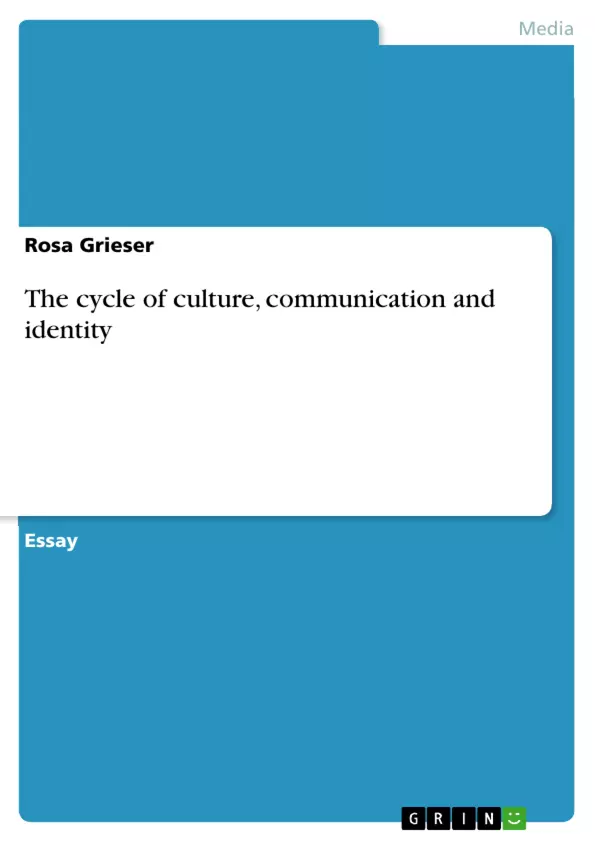When human beings are in the company of relatives, friends and neighbors,
they might take it for granted that communication is a complex continuous
process which has many nonverbal as well as verbal components. It is in the
encounter with a stranger or being in a strange situation which inherent uncertainness.
Having expectations how a stranger may act or how to act in a
strange situation can help to reduce this uncertainness. These expectations
are based on particular social convention, which are part of what is vague
called culture (Payer: 2011). If a situation cannot meet the expectations, people
become suddenly aware that, because all customary behaviors convey
information, they struggle to understand the happening until they know the
particular cultural code (Leach:1996:9p ). A cultural code describes the system
of representation by which signs and their meanings are arranged by cultural
convention to temporarily stabilize significances in particular ways
(Barker 2005: 436). Traffic lights are coded in a sequence: red for stop, orange
for pause and green for go.
Inhaltsverzeichnis (Table of Contents)
- Communication, Culture and Identity
- Culture and Communication
- Culture as Meaning
- Encoding and Decoding Model
- Communication as Meaning Generation
- Features of Communication
- Key Concepts in Intercultural Communication
Zielsetzung und Themenschwerpunkte (Objectives and Key Themes)
This essay aims to explore the interconnectedness of communication, culture, and identity. It examines how these three elements influence and shape one another, shedding light on the dynamic relationship between them.
- Culture as a System of Symbolic Resources
- The Role of Communication in Meaning Generation
- The Influence of Cultural Codes on Communication
- Intercultural Communication and the Significance of Context
- Key Concepts in Intercultural Communication: Worldviews, Values, and Norms
Zusammenfassung der Kapitel (Chapter Summaries)
The essay delves into the complex relationship between communication, culture, and identity by examining various theoretical perspectives. It begins by outlining the importance of cultural conventions in understanding communication, especially in unfamiliar situations. The essay then explores the concept of culture as a system of symbolic resources, emphasizing the role of shared meanings and interpretations in making sense of the world.
The essay further examines the encoding/decoding model of communication, highlighting the potential for distortion and misunderstanding due to differing perspectives and cultural contexts. It then delves into the concept of communication as meaning generation, emphasizing the dynamic and interpretive nature of communication processes.
Finally, the essay explores the key concepts of worldviews, values, and norms in intercultural communication, emphasizing the importance of understanding these cultural elements for effective cross-cultural interaction.
Schlüsselwörter (Keywords)
This essay explores the intricate relationship between communication, culture, and identity, focusing on the role of shared meanings, cultural codes, and intercultural communication. The key concepts discussed include encoding/decoding models, meaning generation, worldviews, values, and norms.
- Arbeit zitieren
- Rosa Grieser (Autor:in), 2012, The cycle of culture, communication and identity , München, GRIN Verlag, https://www.grin.com/document/212409



